Cancer
Latest
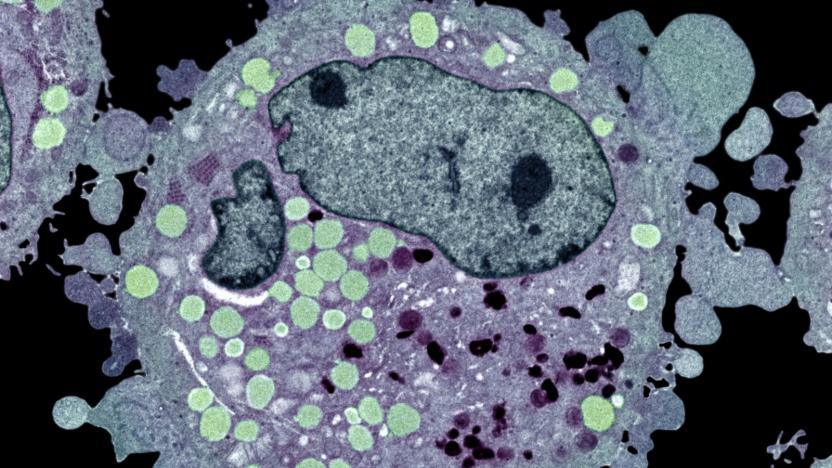
23andMe helps identify genetic links to common skin cancer
The team at 23andMe is clearly going out of its way to show that huge amounts of volunteered genetic data can boost medical research. Scientists at both 23andMe and Stanford used data from consenting customers to conduct the largest ever genetic study of basal cell carcinoma, the most typical form of skin cancer, and made numerous discoveries. They found 14 previously unidentified genetic associations with the cancer, some of which might pinpoint when you're at increased risk. Some gene regions linked to basal cell carcinoma have a larger effect on the young, hinting that environmental factors might play a greater role in getting the cancer as you age. Also, a gene marker's interactions suggest that your risk goes up when you have black or brown hair, and gene areas that maintain telomeres (chromosome ends) played their own part.

Kick Cancer's ass and raise money for sick kids in 'I, Hope'
Nazis, like zombies, are pretty much the perfect video game enemy because there are zero redeemable qualities about them. But those might have some competition now that there's a game where you fight cancer. Not literally, but an enemy named "Cancer" an in the Xbox One's forthcoming I, Hope from indie studio Arconyx. Lead developer Kenny Roy's mission with the ID@Xbox project is to help kids who are actually battling cancer in hospitals around the world to have a cathartic, figurative way to do it as well. More than offering therapy to kids, when it goes on sale next year, 100 percent of the profits generated from the game will go toward helping kids with life-threatening illnesses and their families.

Scientists find a way to make cells respond to stimuli
Through the use of synthetic biology researchers have been able to program cells to perform unique functions, like produce drugs in response to disease markers. In order to create more complex cellular circuits, several MIT engineers have now found a way to program cells to respond to a series of events.
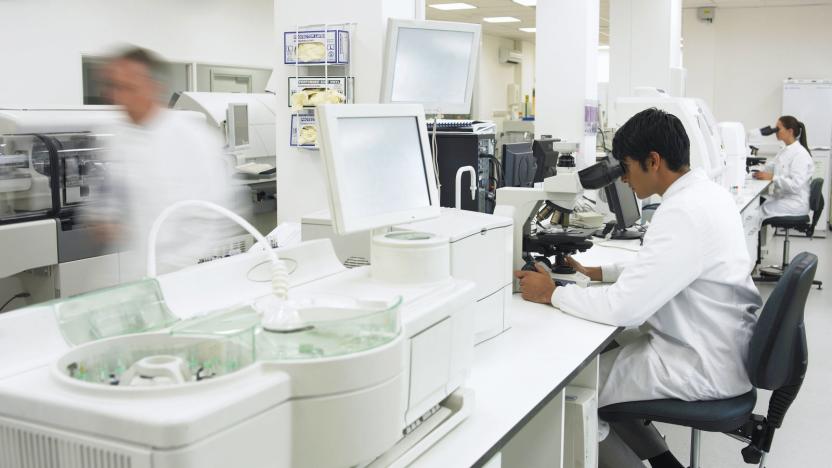
Chinese scientists will soon begin the first CRISPR human trial
American regulators already approved a University of Pennsylvania team's plans to conduct a CRISPR trial on humans, but a group of Chinese scientists will beat them to the punch. The Chinese team from the Sichuan University's West China Hospital in Chengdu will begin testing the efficacy of modified cells for lung cancer treatment in August. They chose patients who still haven't gotten well even after undergoing chemotherapy, radiation therapy and other treatments.

FDA halts Juno's gene-altering cancer trials after three deaths
The Food and Drug Administration has temporarily halted a cancer-treating study after three patients died of swelling in the brain. Biopharmaceutical company Juno Therapeutics had been testing an experimental method known as CAR-T to treat tumors, but it's unclear if trials will continue.

Coin-sized device could lead to personalized cancer therapy
A form of cancer therapy that uses electric fields to stop malignant cells from spreading remains controversial, because it's unclear how effective and safe it truly is. This coin-sized device developed by MIT's research center in Singapore, however, could help scientists study its effects more closely. What's more, it could eventually be used to personalize the treatment for each individual. Medical experts simply have to inject a mixture of hydrogels, healthy cells and different types of cancer cells taken directly from a patient into the device before subjecting it to electric fields at different frequencies. By doing so, they'll be able to pinpoint the most effective electric field frequency to use to treat that particular patient.

ICYMI: Lung cancer detector and smart tape measure
try{document.getElementById("aol-cms-player-1").style.display="none";}catch(e){}Today on In Case You Missed It: A new device is being tested to detect lung cancer by having patients breathe into it. A new tape measure that syncs to a mobile app can calculate distances by simply running it over an item, or using a laser to calculate height. We are super interested in this AI-written show from PBS, and VR fans might be interested in the news out of the Olympics. As always, please share any interesting tech or science videos you find by using the #ICYMI hashtag on Twitter for @mskerryd.
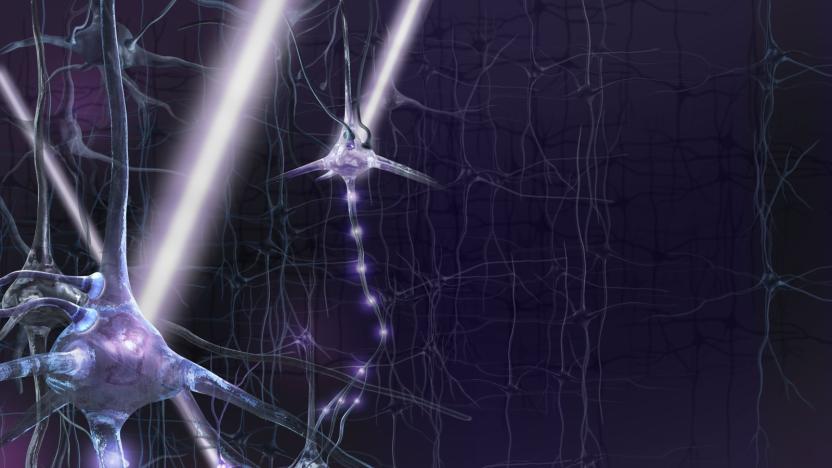
Scientists use light to nuke cancer cells in mice
In the great fight against cancer, scientists look for solutions that are both effective and less ravaging than current treatments like chemotherapy. One experimental concept, optogenetics, uses light to reduce or eliminate cancer cells. Researchers at UT San Antonio have devised a method using this school of treatment to attack inoperable or hard-to-reach tumors, which could give options to patients who were considered too high of risk to help.

See the unusual way cancer cells spread
In many ways, the biggest problem with fighting cancer is containing it: you may kill the main tumor site, but there's a real chance that it'll spread and reemerge as a threat. At last, though, scientists have a better understanding of how that migration happens. British researchers have learned that cancer cells invoke an unusual survival mechanism when they start to float through the body. Proteins on the cell surface (integrins) switch from their usual role, adhesion, to internal signalling that has the rest of the cell protect itself against death. The cancer is steeling itself for the journey, in other words.

ICYMI: Squashing brain cancer and autonomous drones arrive
try{document.getElementById("aol-cms-player-1").style.display="none";}catch(e){}Today on In Case You Missed It: The Airobotics drone system can autonomously launch UAVs and perform basic maintenance, like swapping out batteries. Researchers designed a device that agitates bubbles in the blood to get more chemotherapy into the brain by using ultrasonic waves. And Game of Thrones fans might want to see this Night King carved from fruit. As always, please share any interesting tech or science videos you find by using the #ICYMI hashtag on Twitter for @mskerryd.

CRISPR gene-editing approved for first human trials
A federal ethics and biosafety panel has approved the first ever human trials of the CRISPR-Cas9 gene editing technique. Researchers from the University of Pennsylvania aim to modify the immune system "T cells" in patients, helping them better fight off several kinds of cancer. The work will be funded by the Parker Institute for Cancer Immunotherapy, founded earlier this year by tech billionaire Sean Parker. While the federal ethics panel nod was a big hurdle, researchers still need approval from the FDA and the hospitals conducting the studies before they can start.

Ultrasound implant can help chemo drugs reach brain tumors
One of the biggest problems with brain cancer treatment is that only a limited amount of chemotherapy drugs make it through. See, our brain's blood vessels are tightly lined with cells to keep out toxins and pathogens. The bad news is that it also hinders medicine from reaching tumors. A team of French scientists have recently tested a promising answer to that issue: an ultrasound implant that they designed to temporarily make this "blood-brain barrier" permeable. They ran a pilot with 15 patients suffering from glioblastoma, an aggressive form of brain cancer, and results showed that their technique successfully allowed more medicine to pass through.

RNA gene editing could stop viruses in their tracks
The gene editing technique CRISPR promises to treat all kinds of genetically-linked conditions, but it's so far limited to tweaking DNA, not the RNA that does everything from carrying protein sequence info to regulating gene expression. That may change soon, however. Scientists have discovered that a commonplace mouth bacterium (Leptotrichia shahii) can be programmed to break down whatever RNA you want. You could rip apart viruses, which are frequently based solely around RNA, or kill a cancer cell by denying it the chance to make vital proteins.

Researchers use light and genes to fight cancer
Scientists have already shown that you can use optogenetics (that is, light-sensitive genes and cells) to treat all kinds of medical conditions. However, it now looks like that technique could conquer one of humanity's biggest nemeses: cancer. Tufts University researchers have successfully used optogenetics to prevent and even reverse tumor growth in experiments. They injected frog embryos with genes that produced light-sensitive ion channels in tumor cells; when you expose those tumors to blue light for long enough (roughly a day) and adjust their electrical signals, they go away.

ICYMI: How cancer travels, true hoverboard and more
#fivemin-widget-blogsmith-image-226789{display:none;} .cke_show_borders #fivemin-widget-blogsmith-image-226789, #postcontentcontainer #fivemin-widget-blogsmith-image-226789{width:570px;display:block;} try{document.getElementById("fivemin-widget-blogsmith-image-226789").style.display="none";}catch(e){}Today on In Case You Missed It: MIT researchers discovered that cancer cells can unclump to squeeze through teeny capillaries, then reassemble as cancer clumps on the other side. Zapata Racing has a prototype of a real hoverboard that can fly just like the Green Goblin's, but only for 10 minutes at a time. And a smart toy for pets called PlayDate will let you play with your cat or dog remotely, by moving the ball around through an app and watching your pet's reaction. We also wanted you to see the video of some construction equipment in a Transformers-like battle, after the humans operating them got into some sort of argument and decided to settle it like Gladiators of road construction. As always, please share any great tech or science videos you find by using the #ICYMI hashtag on Twitter for @mskerryd.
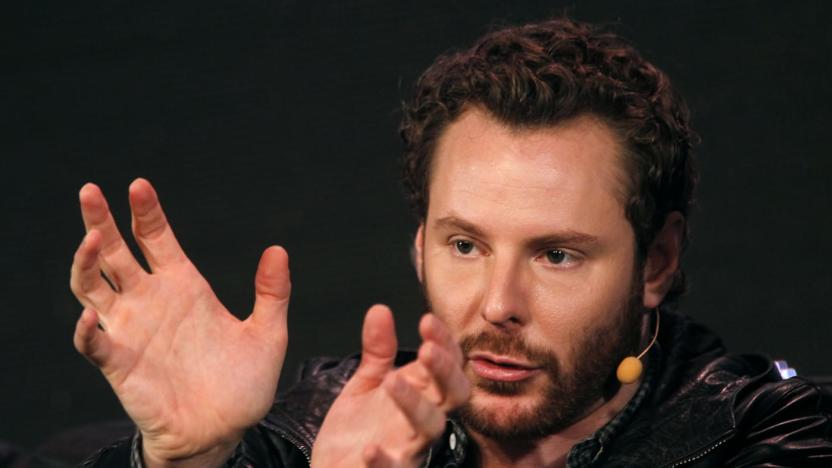
Napster co-founder's new institute aims to beat cancer
Sean Parker is known for many things: co-founding Napster, joining Facebook in its early days, starting charities and creating his share of technology startups. If all goes well, though, he'll also add "helped cure cancer" to that list. He just founded the Parker Institute for Cancer Immunotherapy, a $250 million effort to fight cancer by relying on the body's immune system. The organization will unite six universities (covering 40 labs and over 300 scientists), encouraging them to share research rather than compete. As Parker puts it, humanity is on the "bleeding edge" of what you can do with synthetic biology... it might just need a nudge to turn those findings into real-world treatments.

Stanford's HIV and cancer test detects their presence earlier
A new technique to detect HIV and cancer developed by a team of Stanford chemists could save lives. It's a lot more sensitive than current screening tools, and hence has the power to detect diseases much earlier. As you know, the earlier an illness is detected, the more treatable it is. Like many other screening tests, this one also works by fishing for antibodies our immune system produces when it detects diseases using molecules with "flags" attached to them.

ICYMI: Tricksy smartphones, fake kidney implants and more
#fivemin-widget-blogsmith-image-25170{display:none;} .cke_show_borders #fivemin-widget-blogsmith-image-25170, #postcontentcontainer #fivemin-widget-blogsmith-image-25170{width:100%;display:block;} try{document.getElementById("fivemin-widget-blogsmith-image-25170").style.display="none";}catch(e){} #fivemin-widget-blogsmith-image-25170{display:none;} .cke_show_borders #fivemin-widget-blogsmith-image-25170, #postcontentcontainer #fivemin-widget-blogsmith-image-25170{width:570px;display:block;} try{document.getElementById("fivemin-widget-blogsmith-image-25170").style.display="none";}catch(e){} Today on In Case You Missed It: Brand new Mobile World Congress smartphones can both take heat map selfies and charge your phone with a power pack using salt and water (aka break-up tears). Vanderbilt University researchers developed an artificial kidney that uses the patient's own kidney cells to filter blood and avoid rejection. And it turns out cancer cells get healthy cells to to join their tumor party by engaging in some old-fashioned arm-twisting. Researchers recorded cancer cells extending fibers to reel other cells in and it is not a pretty sight.

President Obama wants US to 'reignite its spirit of innovation'
President Obama gave his final State of the Union address on Tuesday. In it, he discussed how far the country has come over the last year and where he sees it going in the future. But beyond the expected talk of a rebuilt, stronger economy, soaring high school graduation rates and new civil liberties, he laid out a bold plan to, as he puts it, make "technology work for us, and not against us."
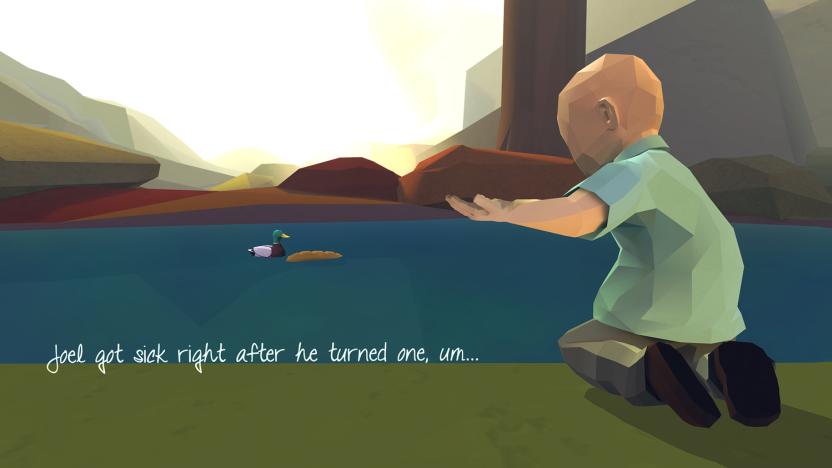
The playable poetry of 'That Dragon, Cancer' lands in January
Joel Green loved pancakes. He was, and continues to be, the inspiration behind That Dragon, Cancer, a low-poly adventure game created by his father, Ryan Green, as Joel battled cancer over four years. Joel Green died in March 2014 at the age of 5.On January 12th, That Dragon, Cancer will land on PC and Mac via Steam, plus Ouya -- and Ryan Green wants everyone to have a pancake party in celebration. Breakfast-food fans and adventure-game lovers can pre-order That Dragon, Cancer and sign up to host a January 12th pancake party on the game's official site.








